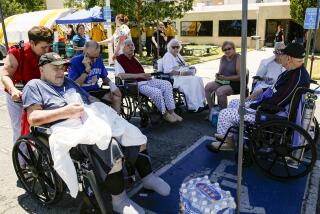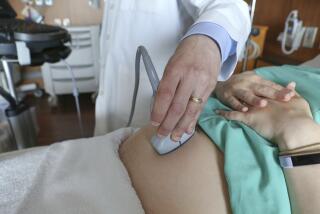Dying Shame
- Share via
The California Medical Center’s decision to close its basic emergency-room operation is entirely understandable. Continued operation would jeopardize the balance of the hospital’s health services. The uncompensated care generated by the emergency services creates an intolerable burden for hospitals. It is a burden that should be borne by the state.
Unfortunately, that fact is not yet understood by Gov. George Deukmejian. He clings to a policy that insists that the counties, not the state, provide the necessary funding for emergency-room services, including the trauma centers. It is an argument that ignores the inability of counties to expand health funding because of the constraints of Proposition 13. And it ignores the fact that the real burden of emergency-room services is the cost to the hospitals of caring for persons who are unable to pay, persons whose care has been an acknowledged state obligation all along. The state’s failure to provide its fair share of health-care costs for the so-called medically indigent population is at the heart of the crisis.
With the closing next month of the California Medical Center at 1414 S. Hope St., the most-used downtown emergency facility will no longer be available for paramedic rescue ambulances. That means, in practical terms, longer ambulance rides and delayed care for victims of heart attacks and traffic accidents, and it also means an increased burden on other hospitals that already are overtaxed with emergency cases.
Los Angeles County currently has 97 state-licensed hospital emergency rooms, each with a physician on duty at all hours. Of these, 16 are designated trauma centers, with full surgical operating-room teams on duty 24 hours a day. The number of trauma centers has declined in recent years from 23 to 16. The withdrawal of the California Medical Center from the emergency network is expected to be followed by other such withdrawals. At least three other downtown hospitals, those that are most likely to be affected by the closing of the California Medical Center, are considering the termination of their state-certified emergency rooms.
The California Medical Center has been receiving 800 ambulance cases a month. It lost an average of $500,000 a month last year on emergency-room patients who did not pay their bills, most of them indigents unable to pay. Those 800 ambulance services will now be transferred to other hospitals--some too small to absorb new cases, some already overloaded. The greatest burden will fall onto County-USC, now close to capacity with more than 1,400 ambulance runs a month, and Martin Luther King, with more than 1,300.
Some people may be tempted to dismiss this as yet another unresolved problem for the poor and the deprived of the community. That is to miss the point. The trauma network serves all. Its importance is crucial to all citizens, for no one can predict the location of accidental injury, heart attack or stroke. When those events occur, minutes can mean the difference between life and death. The network of trauma hospitals and other licensed emergency rooms was intended to ensure quick access to facilities with physicians on duty at all times. As the network breaks up, the effect will be the same for those who can afford to pay and those who cannot. The risk of death will rise regardless of the ability to pay.
More to Read
Sign up for Essential California
The most important California stories and recommendations in your inbox every morning.
You may occasionally receive promotional content from the Los Angeles Times.










